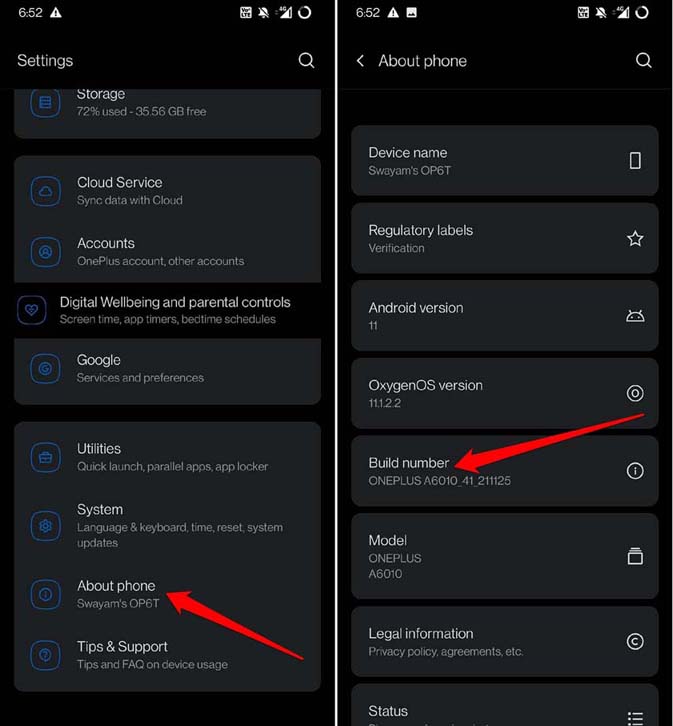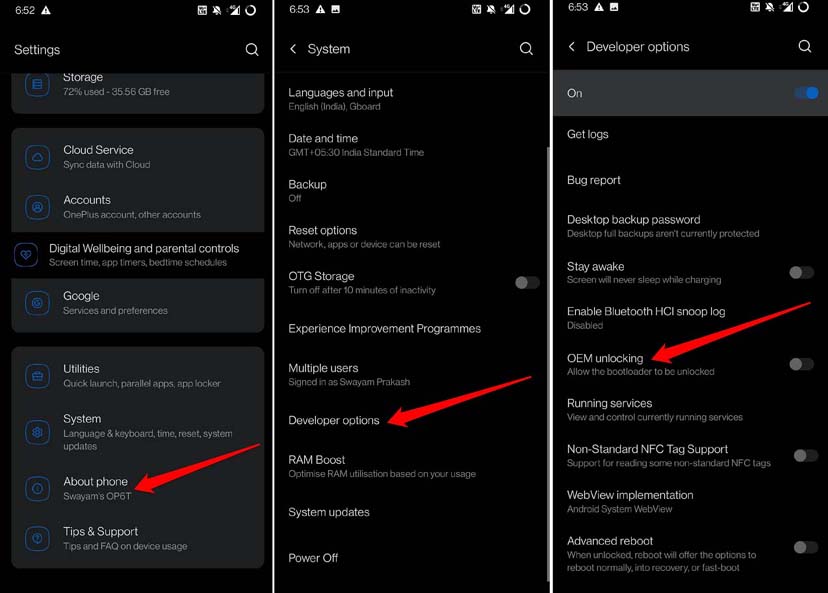Rooting these days has become relatively more straightforward. To get to the phase to root your Android device, you need to perform OEM unlock on your Android device. You will follow that step by unlocking the bootloader of the device. Then through fastboot access, you can install TWRP or any custom recovery. Then you may root using apps such as Magisk.
1. What is OEM Unlocking?
While rooting your Android phone may sound cool, your device maker doesn’t want you to do it. As I mentioned, when you unlock the OEM, it is followed by unlocking the bootloader.
- What is OEM Unlocking?2. Steps to Perform OEM Unlock in Android2.1 Enable Developer Option on Android PhoneWrapping Up
An unlocked bootloader will cut off the warranty period of your Android device. If you are confused, unlocking the OEM and the bootloader are separate things but are used stepwise for rooting. OEM lock is that gateway set by the manufacturer of your phone. You need to pass this gate to find your way to the bootloader to unlock it. OEM unlock doesn’t trigger warranty void. It’s the bootloader unlock that causes your phone’s warranty to expire. When the warranty voids on your device, you cannot claim free service for any technical issue. Also, any wrong move in unlocking the bootloader can cause your Android device to brick permanently. To avoid all these issues, the OEM, the abbreviation for Original Equipment Manufacturer [usually the smartphone brand], hides away the option to perform OEM unlock in Android devices. Usually, it is suggested to root an Android device that has gone past its warranty period. Also, if your Android phone is your daily driver, refrain from rooting it. Instead, use a secondary Android device if you have access to one.
2. Steps to Perform OEM Unlock in Android
Important: If, in the process of unlocking the OEM or by rooting, your device gets bricked, the author or TechDator will not be held responsible. Always perform manual modding of smartphones with proper knowledge. Before proceeding towards OEM unlock, back it up just for the safety of your data on the phone. You may back up the data to Google Drive or copy and paste it to your PC hard drive. Mostly those who carry out OEM unlock do it as a pre-requisite for rooting their devices. Now, the OEM unlock option is hidden in the Android system settings. You must first enable developer mode on your Android phone to access that option. Here are the steps for that.
2.1 Enable Developer Option on Android Phone
The tab Developer Option will now become available in the System settings of your Android device. Now, you have to access the Developer Option, and within that lies the option to unlock OEM in your Android device. Now, with the OEM unlocked on your Android device, you can move along and unlock the bootloader on your device. You can try these fixes if you cannot see an option for OEM unlock even after enabling Developer Options. Make sure to update your Android phone to the latest system build that is available. You may try to set your device’s date to a previous month or year.
Wrapping Up
Android OS is open-source software. It offers so much scope for customization for tech-savvy potential super users. To explore the world of custom ROMs and TWRP, you must root your Android device. You need to know how OEM unlock in Android is done. Now, through this guide, you will be ready to dip your toes in the world of rooting smartphones.


